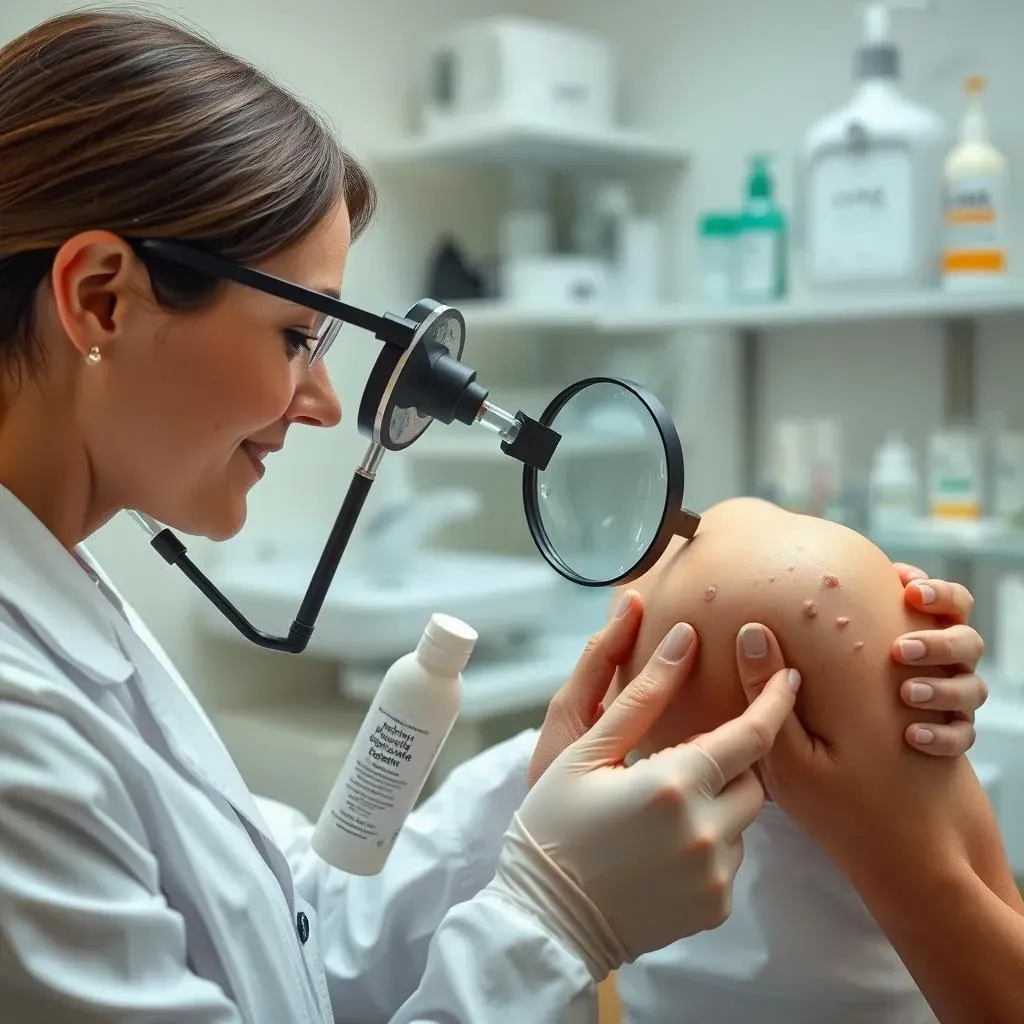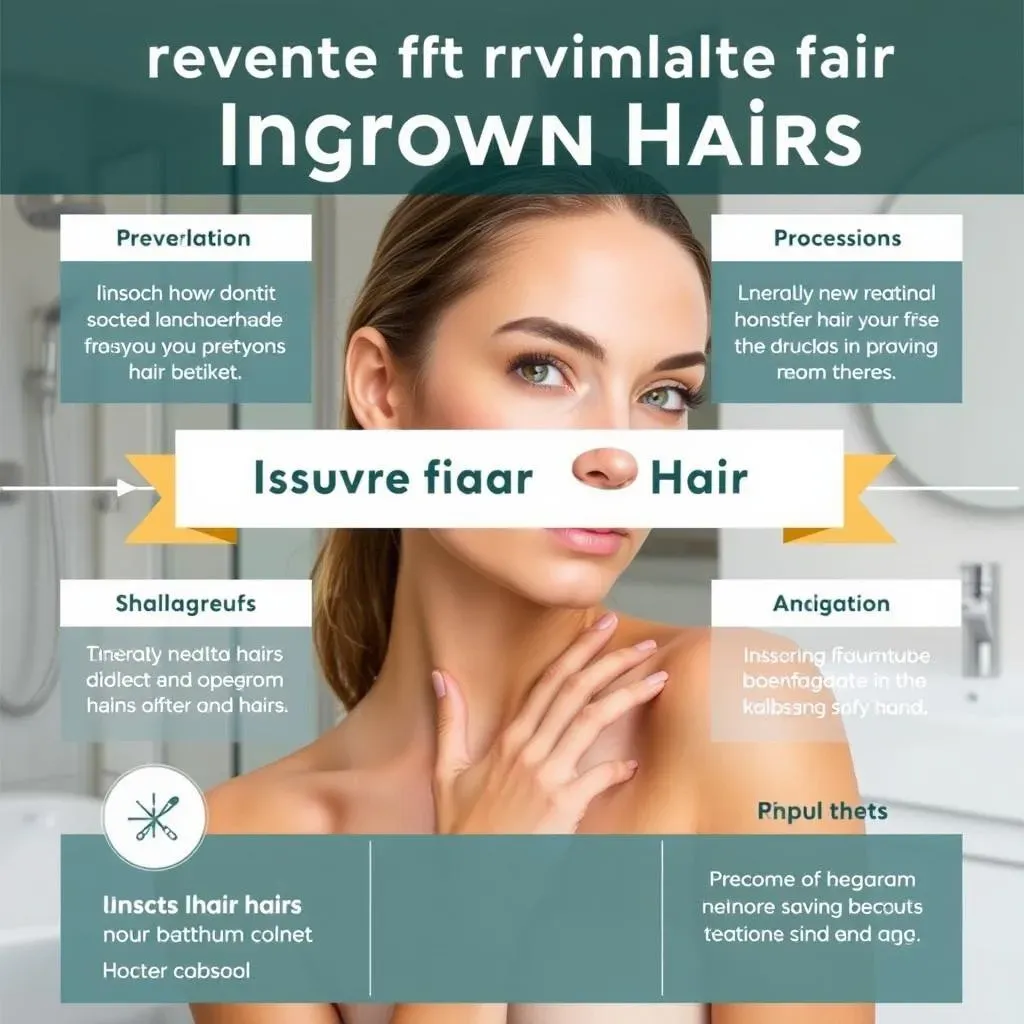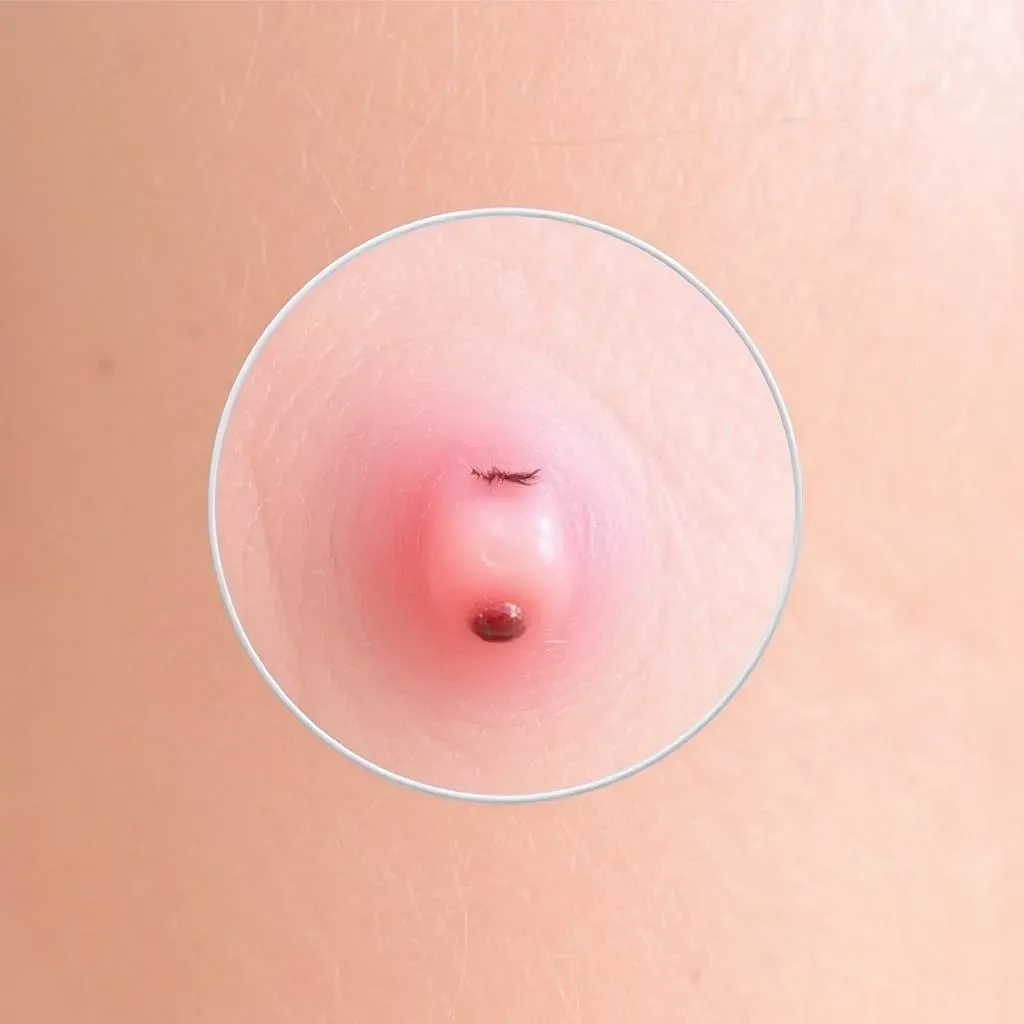Table of Contents
Ingrown hairs can be a frustrating and painful problem for many individuals, especially those with curly or coarse hair. The removal of ingrown hair is a delicate process that requires careful consideration to avoid further irritation and potential infection. In this article, we will delve into the world of ingrown hairs, exploring their causes, symptoms, diagnosis, and treatment options. We'll also discuss preventive measures to help you avoid ingrown hairs in the future. Whether you're struggling with ingrown hairs or looking for ways to prevent them, this comprehensive guide will provide you with the knowledge you need to tackle this common issue. From understanding the risks and symptoms to learning about advanced removal of ingrown hair methods, such as laser hair removal, we'll cover it all. So, let's get started on this journey to smooth, ingrown-hair-free skin.
Causes and Symptoms of Ingrown Hair: Understanding the Risks

Causes and Symptoms of Ingrown Hair: Understanding the Risks
What are Ingrown Hairs and How Do They Form?
Ingrown hairs occur when a hair grows back into the skin instead of outward, causing inflammation, redness, and sometimes infection. This can happen due to various reasons such as tight clothing, shaving, waxing, or tweezing. People with curly or coarse hair are more prone to ingrown hairs because their hair tends to curl back into the skin more easily.
Ingrown hairs can appear anywhere on the body where hair grows, but they are most common in areas like the bikini line, armpits, and neck. Symptoms may include small bumps or pus-filled spots, itching, pain, and discoloration. If left untreated, ingrown hairs can lead to serious infections, so it's essential to address them promptly.
Symptoms and Signs of Ingrown Hairs
Identifying the symptoms of ingrown hairs is crucial for proper treatment. Some common signs include:
- Redness and inflammation around the affected area
- Pain or tenderness to the touch
- Small bumps or pustules
- Itching or burning sensation
- Hyper-pigmentation or dark spots after the ingrown hair has healed
It's also important to note that ingrown hairs can be confused with other skin conditions like acne or folliculitis. If you're unsure about the cause of your symptoms, it's always best to consult a dermatologist for an accurate diagnosis.
Risk Factors and Prevention
Certain factors can increase your risk of developing ingrown hairs. These include:
Risk Factor | Description | Prevention Tip |
|---|---|---|
Tight Clothing | Friction from tight clothes can cause hairs to curl back into the skin. | Wear loose, breathable clothing to reduce friction. |
Curly or Coarse Hair | Hair with tight curls is more likely to grow back into the skin. | Use gentle hair removal methods and exfoliate regularly. |
Poor Shaving Techniques | Shaving against the grain or using dull razors can cause ingrown hairs. | Always shave in the direction of hair growth and use a sharp razor. |
By understanding the causes and symptoms of ingrown hairs, you can take steps to prevent them and seek proper treatment if they do occur. Remember, early intervention is key to avoiding complications and promoting healthy skin.
Diagnosis and Treatment Options for Ingrown Hair Removal

Diagnosis and Treatment Options for Ingrown Hair Removal
Diagnosing ingrown hairs typically involves a physical examination by a dermatologist. They will look for signs of inflammation, redness, and pus-filled bumps. In some cases, a biopsy may be performed to rule out other skin conditions. Once diagnosed, treatment options vary depending on the severity of the ingrown hair.
Mild cases can often be treated with home remedies such as warm compresses, exfoliation, and topical creams like hydrocortisone or tea tree oil. For more severe cases, medical treatments may be necessary. These can include:
- Antibiotics to treat infections
- Steroid creams to reduce inflammation
- Retinoids to prevent clogged pores
In some cases, the ingrown hair may need to be removed by a medical professional. This can be done using a sterile needle to bring the hair to the surface of the skin. It's essential to avoid attempting to remove ingrown hairs yourself, as this can lead to further irritation, scarring, and infection.
Treatment Options for Ingrown Hair
Treatment | Description | Effectiveness |
|---|---|---|
Warm Compresses | Applying a warm, damp cloth to the affected area to help the hair come to the surface. | Effective for mild cases |
Topical Creams | Using creams like hydrocortisone or tea tree oil to reduce inflammation and fight infection. | Effective for reducing inflammation |
Antibiotics | Prescription medications to treat bacterial infections. | Effective for severe infections |
It's crucial to follow the advice of a dermatologist and complete any prescribed treatment to ensure the ingrown hair heals properly and doesn't lead to further complications. With the right diagnosis and treatment, it's possible to successfully remove ingrown hairs and prevent future occurrences.
Prevention Strategies for Ingrown Hair: Tips and Best Practices

Prevention Strategies for Ingrown Hair: Tips and Best Practices
Preventing ingrown hairs requires a combination of proper hair removal techniques, good skincare habits, and lifestyle changes. By adopting these strategies, you can significantly reduce the risk of developing ingrown hairs and maintain healthy, smooth skin.
Proper Hair Removal Techniques
When it comes to hair removal, the method you choose can make a big difference. Here are some tips to help you remove hair safely:
- Always shave in the direction of hair growth, not against it.
- Use a sharp razor and avoid sharing razors.
- Exfoliate before shaving to remove dead skin cells.
- Use a soothing aftershave to calm the skin.
For those who prefer waxing or sugaring, make sure to follow the proper technique and use high-quality products to minimize irritation.
Skincare Routine
A consistent skincare routine can help prevent ingrown hairs by keeping the skin clean and exfoliated. Consider the following:
Skincare Step | Frequency | Benefits |
|---|---|---|
Cleansing | Daily | Removes dirt and bacteria |
Exfoliation | 1-2 times a week | Removes dead skin cells, prevents clogged pores |
Moisturizing | Daily | Hydrates the skin, reduces irritation |
Remember to be gentle when exfoliating, especially in areas prone to ingrown hairs. Harsh products or rough exfoliating can further irritate the skin.
Lifestyle Changes
Certain lifestyle habits can contribute to ingrown hairs. Making a few simple changes can help:
- Wear loose, breathable clothing to reduce friction.
- Avoid tight underwear, which can cause friction in the groin area.
- Stay hydrated to keep your skin healthy and moisturized.
By incorporating these prevention strategies into your daily routine, you can significantly reduce the occurrence of ingrown hairs and enjoy healthier, smoother skin.
Advanced Removal of Ingrown Hair Methods: Laser Hair Removal by hairawaybylaser.com

Advanced Removal of Ingrown Hair Methods: Laser Hair Removal by hairawaybylaser.com
What is Laser Hair Removal and How Does it Work?
Laser hair removal is a popular method for permanent hair reduction, and it can also be an effective solution for removing ingrown hairs. The process involves using a laser to target and destroy hair follicles, preventing future hair growth. At hairawaybylaser.com, their state-of-the-art laser technology is designed to safely and effectively remove unwanted hair, reducing the risk of ingrown hairs.
The laser emits a beam of light that is absorbed by the pigment in the hair follicle, damaging the follicle and preventing regrowth. This method is particularly useful for individuals with curly or coarse hair, as it can help prevent ingrown hairs from forming in the first place. Laser hair removal is a long-term solution, requiring multiple sessions to achieve optimal results.
Benefits of Laser Hair Removal | Advantages | Results |
|---|---|---|
Permanent Hair Reduction | Significantly reduces hair growth | Smooth skin for longer periods |
Minimizes Ingrown Hairs | Targets and destroys hair follicles | Reduced risk of ingrown hairs |
Convenience | Long-term solution, reducing need for frequent shaving or waxing | Saves time and effort in the long run |
How Laser Hair Removal Can Help with Ingrown Hair Prevention
Ingrown hairs can be a recurring problem for many individuals, but laser hair removal offers a solution. By targeting the root of the problem—the hair follicle itself—laser hair removal can prevent ingrown hairs from forming. This method is especially beneficial for areas prone to ingrown hairs, such as the bikini line, neck, and armpits.
At hairawaybylaser.com, their experienced technicians use advanced laser technology to customize treatments based on individual skin and hair types. This ensures maximum comfort and effectiveness during the procedure. With laser hair removal, you can say goodbye to the constant battle against ingrown hairs and enjoy smoother, healthier-looking skin.
- Reduces the need for frequent shaving or waxing
- Minimizes the risk of ingrown hairs and razor burn
- Permanent hair reduction for long-term results
- Customizable treatment plans for optimal comfort and effectiveness
Conclusion: Achieving Ingrown Hair-Free Skin with Effective Removal of Ingrown Hair Methods
In conclusion, the removal of ingrown hair requires a comprehensive approach that encompasses understanding the causes, recognizing the symptoms, and exploring various treatment options. By adopting preventive measures such as proper hair removal techniques, maintaining good skincare routines, and considering advanced methods like laser hair removal, individuals can reduce the occurrence of ingrown hairs and promote healthy, smooth skin. Remember, if ingrown hairs persist or become infected, consulting a healthcare professional is essential for proper diagnosis and treatment. With the right strategies and techniques, you can say goodbye to the discomfort and embarrassment of ingrown hairs and hello to radiant, ingrown-hair-free skin. Whether you choose traditional methods or advanced solutions like those offered by hairawaybylaser.com, taking control of ingrown hair removal is the first step towards a more confident you.
